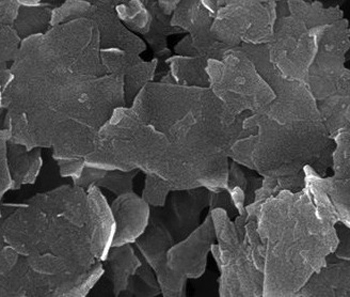Graphite Exfoliation

Because of the layered nature of natural flake graphite, it can be modified by processes of intercalation and exfoliation.
Intercalation
Intercalation is the process by which a molecule acting as an intercalant can migrate and deposit between two others, in this case being the graphene layers of the graphite crystal. Many intercalants can be used but the most common is a mixture of sulfuric and nitric acid.
Once intercalated, the excess intercalant is rinsed off and the graphite dried. This results in a saleable product without any further processing and is sold as expandable flake graphite, which is primarily used as a fire extinguisher agent in composite materials and paints and as a protective additive to the surface of molten metals. When subjected to high heat, the intercalants expand rapidly and dramatically in situ causing the graphite to expand or exfoliate into a thermally protective layer.
Exfoliation
The intercalated graphite can be processed further by exfoliation in a high temperature reactor. This results in an expanded product hundreds of times larger and lower than its original volume and bulk density respectively. This product is primarily used in forming foils, gaskets, seals and packing, and also in conductive resin composites. A very large portion of market growth has been the development of flat screen HDTVs which incorporate a large graphite foil sheet which acts as a heat sink. Other novel emerging markets include oil sorption from water and other water purification methods.
All natural flake graphite is not equal in this particular market. The most important quality to look for is flake size. When the flake is larger, the intercalant when heated must travel further to escape from between the graphene layers resulting in a higher expansion. The higher the expansion, the more mouldable and compressible the product will be.
